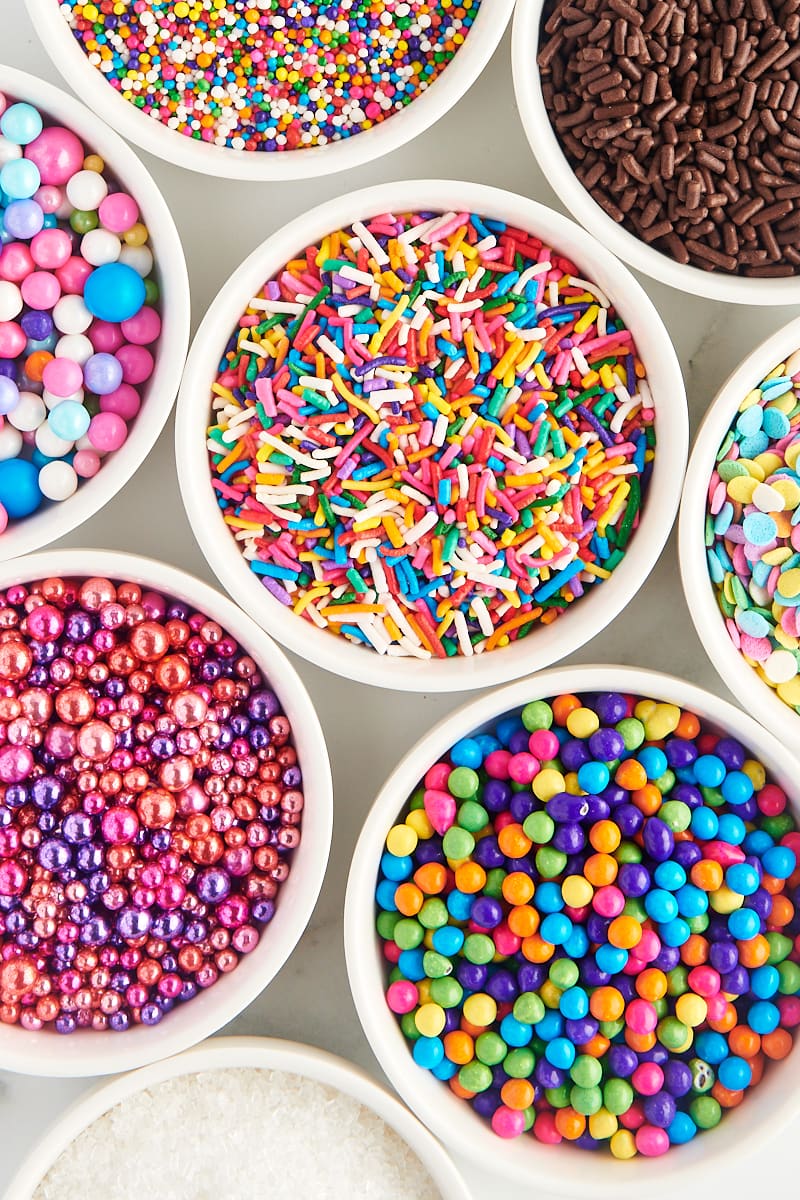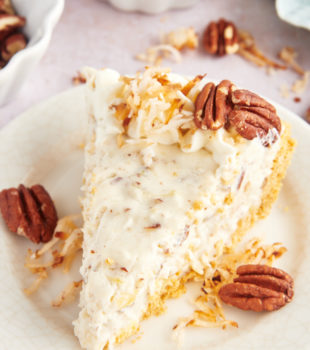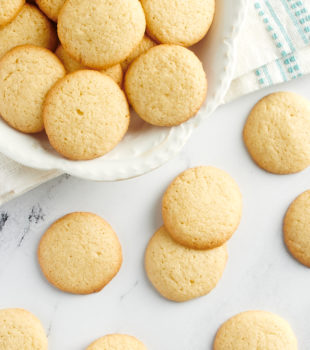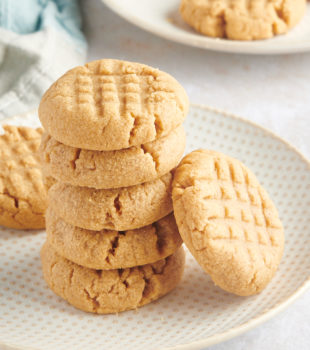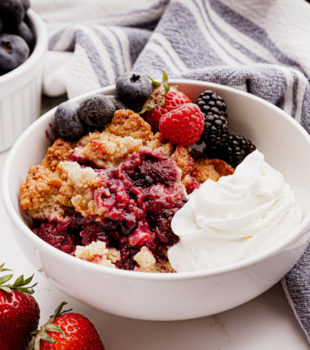Let’s take a look at the most common types of sprinkles and how you can use them to add some fun color to your baked goods!
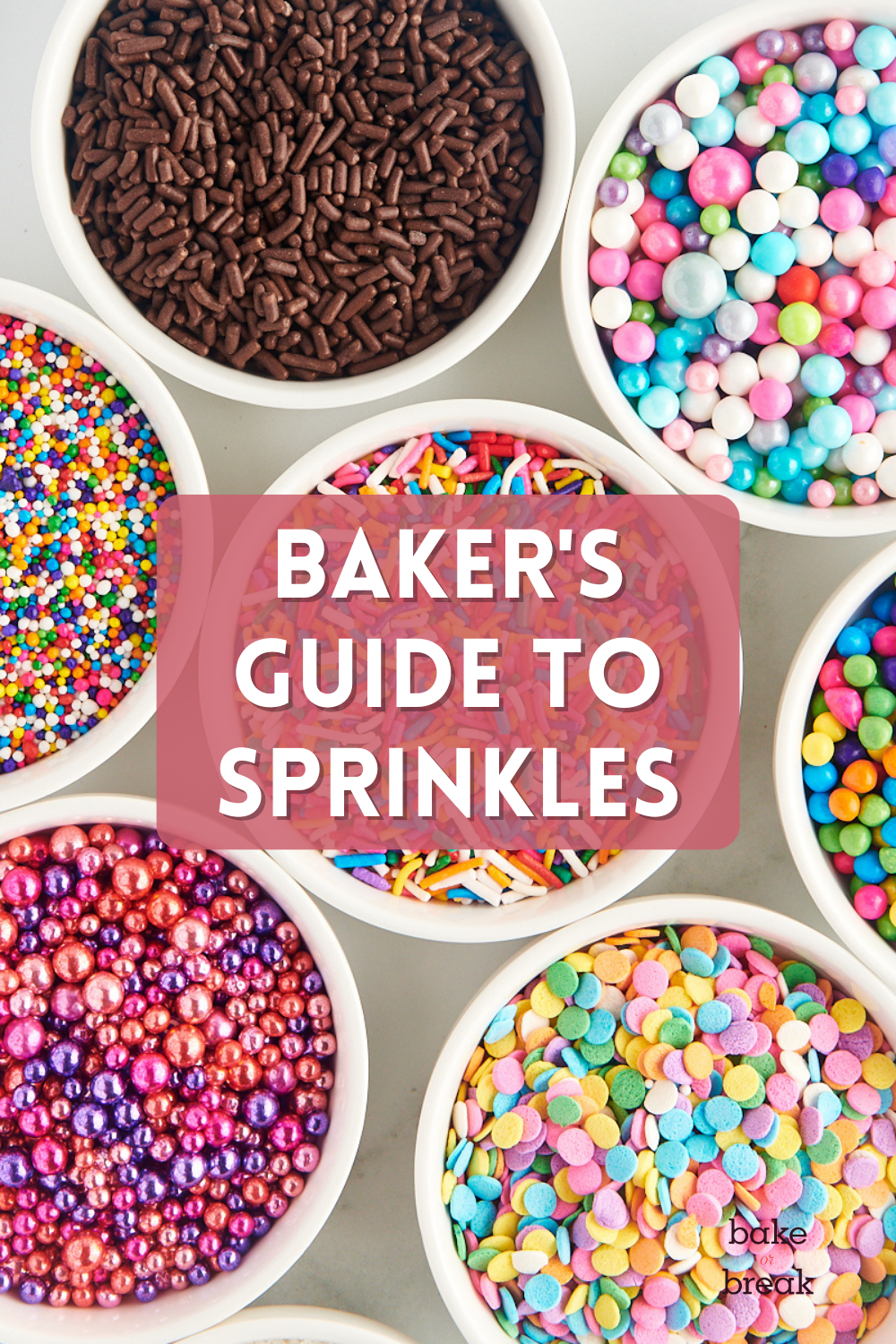
Different Types of Sprinkles
Sprinkles are a great addition to many baked goods, adding a pop of color and texture that can turn an ordinary dessert into a festive celebration. With so many types of sprinkles available on the market, it can be confusing to know which ones to use for baking and decorating.
From classic rainbow jimmies to trendy metallic dragées, there are a variety of sprinkles to suit every taste and occasion. Let’s take a look at some of the most popular types of sprinkles and their unique characteristics. Then you can choose the perfect sprinkle for your next baking adventure!
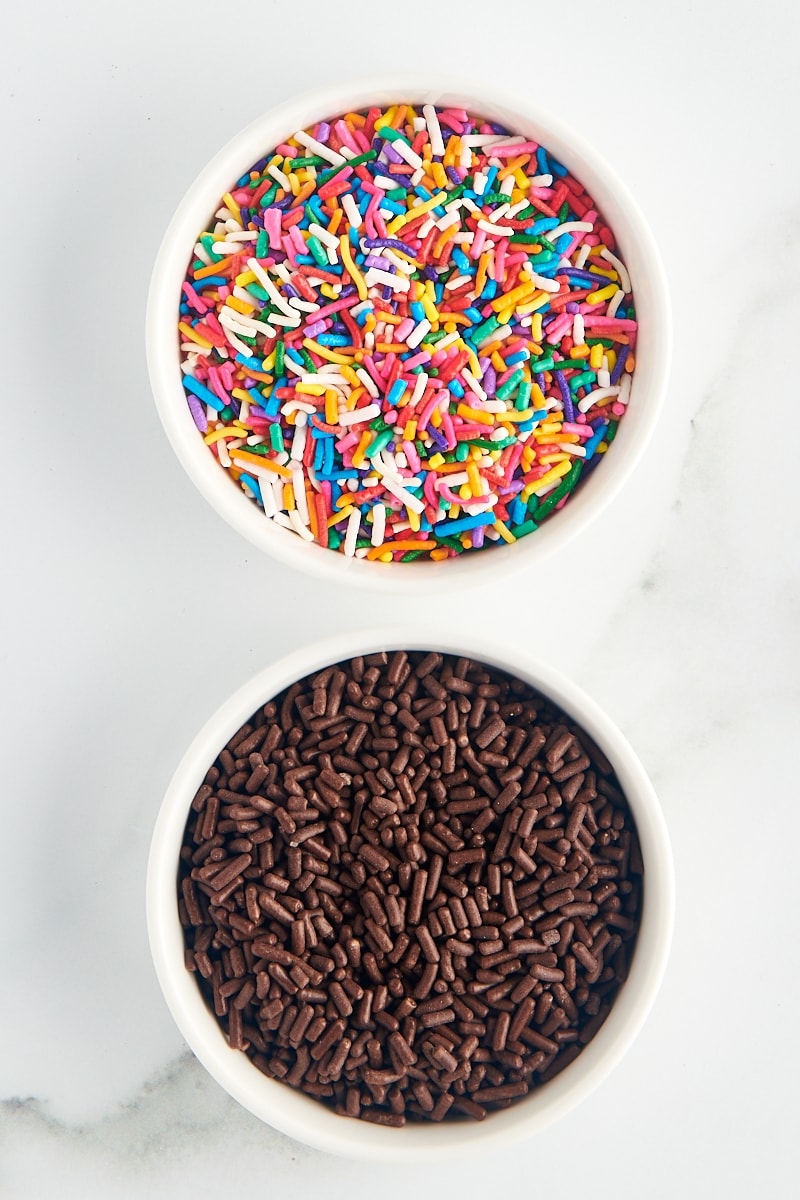
Jimmies
What are jimmies? Jimmies are the most popular type of sprinkle. When you think of sprinkles, these are likely what first comes to mind. They’re long, thin rods that are available in a variety of colors. Unlike other types of sprinkles, jimmies do not have a hard candy shell and have a softer texture. You can also commonly find chocolate jimmies. Be sure to check the label to make sure they contain chocolate or cocoa, as some are just colored to look like chocolate.
When should I use jimmies? These sprinkles are quite versatile. They work well for decorating baked goods and desserts, but they also usually work well baked into batters and doughs. Their colors aren’t likely to bleed much into whatever you’re baking, so they’re usually the best choice for baking with sprinkles, like in Sprinkle Crinkle Cookies.

Quins
What are quins? Quins are flat sprinkles that are usually round, but can also be in various shapes like stars and hearts. They may also be called sequins or confetti sprinkles for their resemblance to each of those.
When should I use quins? Like jimmies, quins are good for both garnishing finished baked goods and for mixing into batters and doughs. (You can see them in action on my vanilla sheet cake.) Different brands vary, of course, but the colors of quins tend not to bleed.
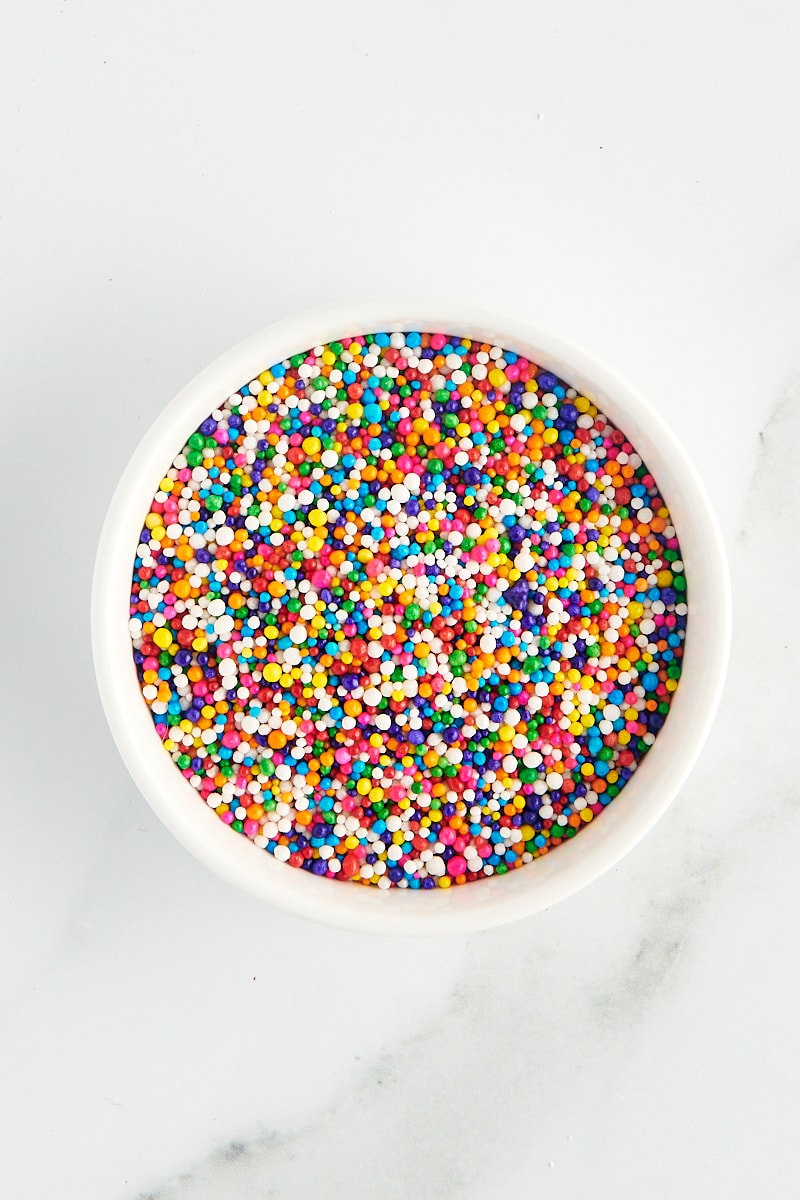
Nonpareils
What are nonpareils? Nonpareils (pronounced “non-PUH-rells”) are tiny spherical sprinkles. They are sometimes referred to as “sprinkle dots” or “hundreds and thousands” and are made from tiny balls of sugar and starch that are coated in a hard candy shell.
When should I use nonpareils? Like other sprinkles, nonpareils can be used as a garnish on baked goods. Their colors tend to bleed, so they’re not great for mixing into batters and doughs. That being said, cookie dough can be rolled in nonpareils before baking, like with Drop Sugar Cookies.
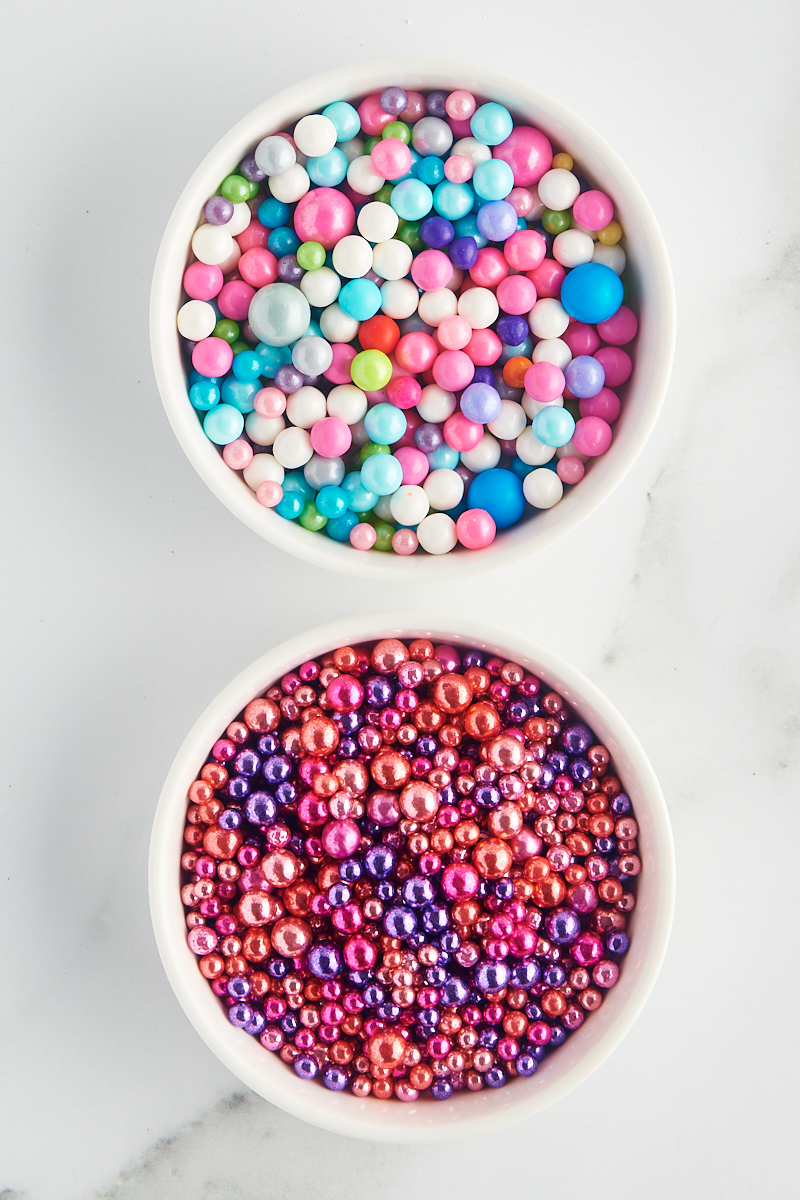
Dragées and Sugar Pearls
What are dragées? Dragées (pronounced pronounced “drah-ZHAY”) are large, spherical sprinkles that have a hard outer shell. The shiny metallic varieties aren’t considered edible, at least in the U.S.
What are sugar pearls? Sugar pearls are also big, round sprinkles that look quite similar to dragées but are usually coated with an edible wax or shellac. They’re also usually fairly hard and crunchy.
When should I use them? While these two types of sprinkles are quite pretty and eye-catching, it’s best to use them in moderation for decoration, as their hard texture can make eating them unpleasant. And as mentioned, the metallic varieties aren’t universally considered to be edible.

Sixlets
What are sixlets? Sixlets are candy-coated chocolate balls. They’re usually fairly small and available in a variety of colors.
When should I use sixlets? Use sixlets to garnish your baked goods, but don’t try to bake with them.
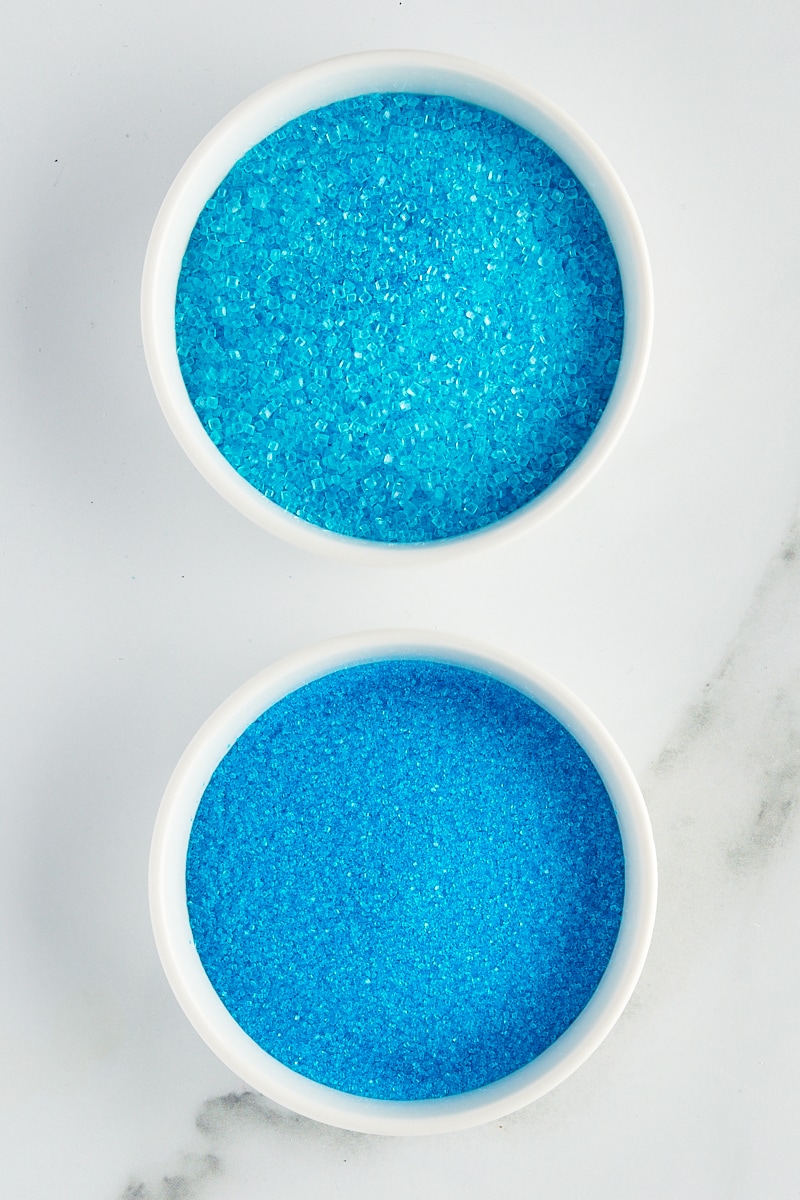
Sanding Sugar and Sparkling Sugar
What is sanding sugar? Sanding sugar is a fine sugar that can either be white or dyed in various colors. It’s also called decorating sugar or crystal sugar.
What is sparkling sugar? Sparkling sugar is a coarse sugar that, like sanding sugar, is available in white or a variety of colors. You may see it referred to simply as coarse sugar.
When should I use them? These sugars are often used to garnish baked goods, but you can also sprinkle them on top of batters and doughs before baking to give them a bit of sparkle and a little extra sweetness.
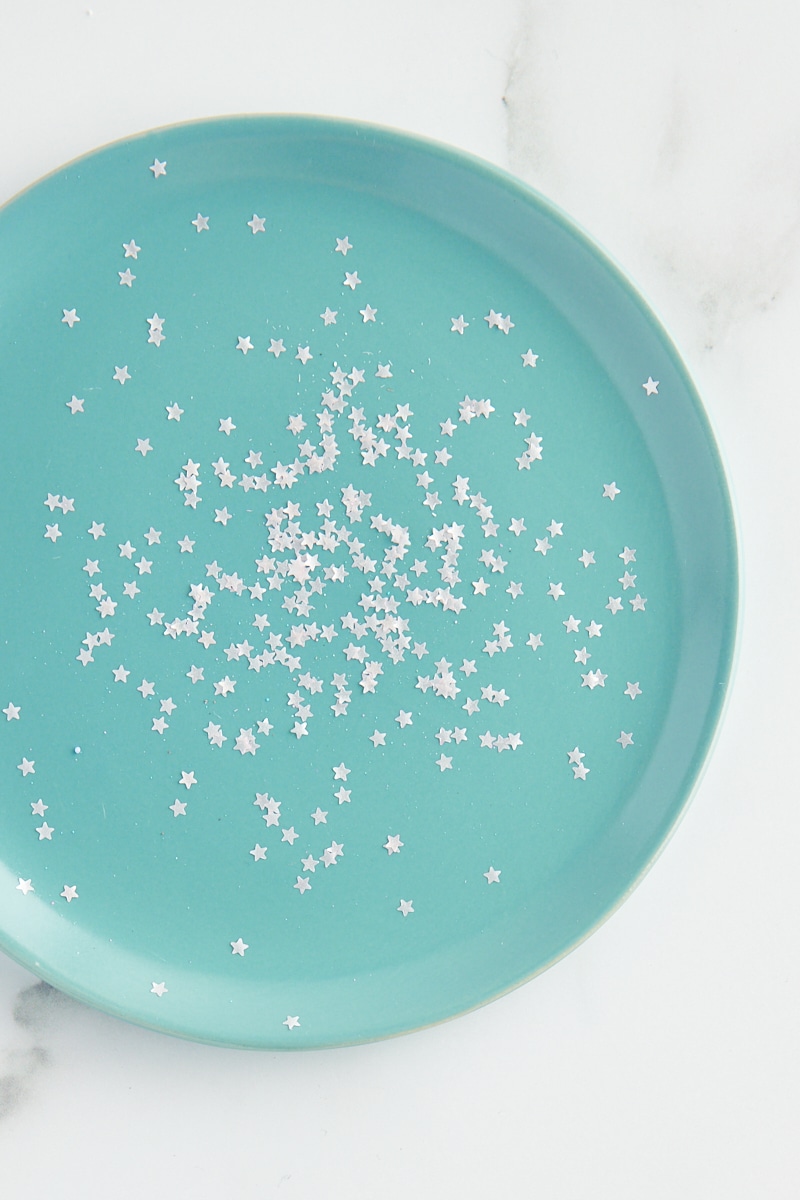
Edible Glitter
What is edible glitter? Edible glitter is just what the name implies – a sparkling, shiny glitter that’s edible. That can be glitter dust or tiny shapes.
When should I use edible glitter? Use edible glitter to add a sparkling garnish to your baked goods before serving. The glitter will dissolve during baking, so don’t add it to your batters and doughs. It’s important to note that not all glitter marketed as “edible” is actually safe to eat, so it’s important to check the ingredients and ensure that it’s food-safe and meant for consumption.
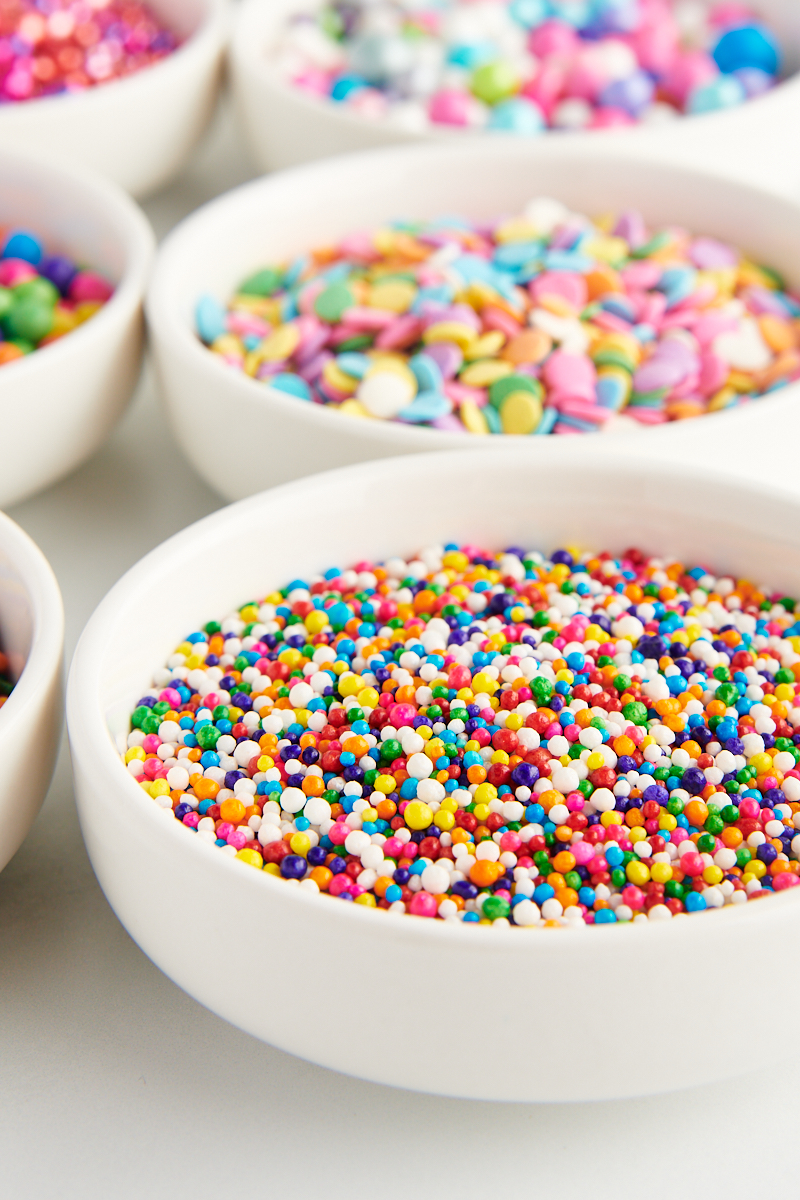
Frequently Asked Questions
Sprinkles are made of small pieces of sugar-based confectionery that are typically coated with food coloring and sometimes other flavorings. The exact composition of sprinkles can vary depending on the manufacturer and the type of sprinkle.
Yes, sprinkles do have an expiration date. The shelf life of sprinkles can vary depending on the type of sprinkle, the storage conditions, and the specific manufacturer. However, as a general rule, sprinkles can typically last for up to 12 months if stored properly in a cool, dry place and in an airtight container. It’s always a good idea to check the expiration date on the package of sprinkles before using them, and to discard any sprinkles that appear stale or discolored.
Sprinkles should be stored in a cool, dry place and in an airtight container to help preserve their freshness and prevent them from clumping together. Exposure to heat, humidity, and moisture can cause sprinkles to become sticky and lose their color and texture. A pantry or cupboard is a good place to store sprinkles, as long as it is not located near a heat source or in an especially humid area.
They can be, depending on the brand and type of sprinkle. Be sure to check the label and ingredients to verify if they fit your dietary needs.
